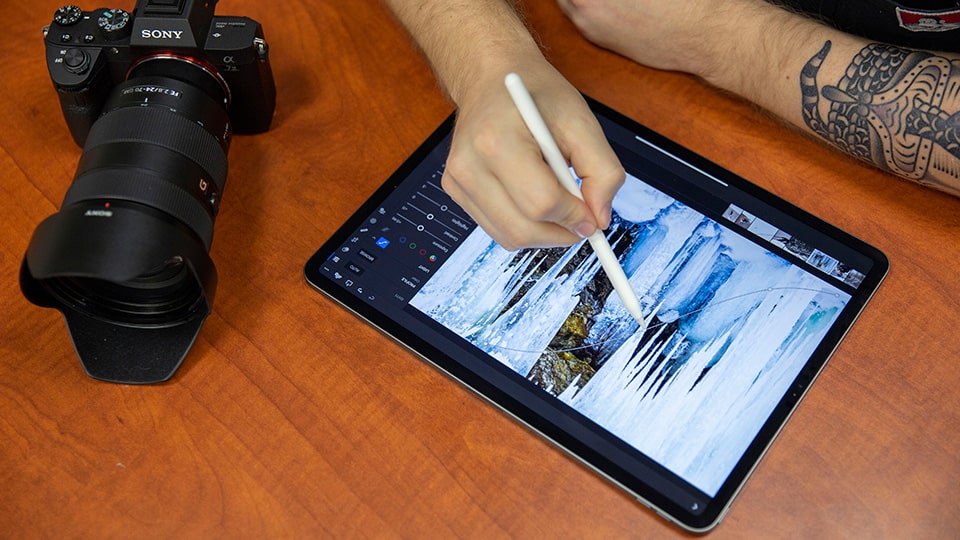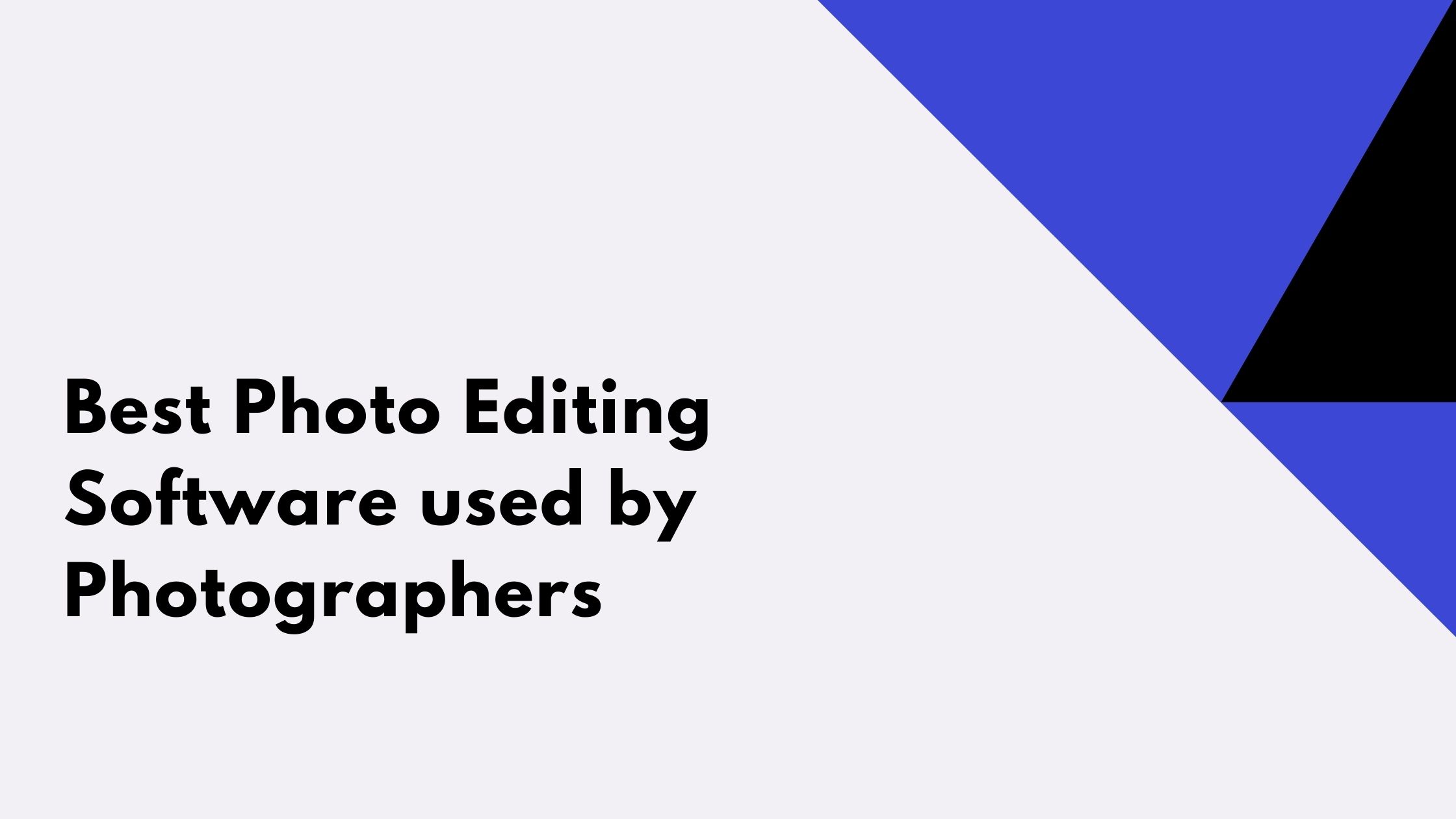Everyone knows the importance of perfect photo bears in modern times. Every photographer tries his best to capture the best possible shot but there are numerous other factors that affect the way a photo looks be it lighting conditions, backgrounds, or color balance. There are times when conditions are not favorable for the photographer and that is when photo editing comes to his rescue. The practice of photo editing dates back to the second half of the 20th century with the advent of photography itself. From hand-coloring black and white photos to using advanced editing tools, photo editing has gone through numerous developments.
The profession of photography nowadays is not as manageable as it was a few years back. Back then also, photographs were edited, but the process wasn’t this elaborative, and very few tools were available to work with. But, the technological inventions of so many editing software gave birth to a new profession altogether, a profession called editing, which was instrumental in taking some burden off of photographers’ shoulders. Editors are professionals who have specialized in editing skills, but still, some photographers are more comfortable in editing their own pictures, which definitely gives them an upper hand over editors as they exactly know what’s needed.
In this digital age, editing has not seemed to photographers only. With the rise of social media platforms like Facebook, Instagram, etc., everyone who has an Instagram account needs to get their photos edited. But, editing by professional photographers has its own charm. The following are the software with the help of which they create that enormous magic:-
1. Skylum Luminar
- The benefit of a monthly subscription
- Used both as a photo editor and photo organizer.
- Preset workspace options are more elaborate and cover a lot of skills needed for photography.
- AI slider is known for its quick fixes like instant brightening, toning, and clarifying like other adjustments.
The gallery is pre-stocked with high-quality stylized looks
2. Adobe Photoshop
- Extensive range of tools.
- Handy shortcuts designed to trim away the excess work.
- 3D workspace with 3D panel and 3D Material Dropper.
- Customized workspace accentuating your favorite tools.
- Multi-layered editing feature.
3. GIMP
- The facility of customizing workspace’s color, widgets, and spacing of widgets.
- Supports multi-plugging with Luminar and Photoshop.
- Free, open-source editor.
- A very good alternative to photoshop for photo composition and image re-touching.
4. Snappa
- Perfect software for beginners.
- No major learning techniques or shortcuts, every tool needed is there in the toolbox lying horizontally at the top.
- The option of dragging and dropping images.
- Inclusion of texts and graphics are also allowed.
What do photographers use to edit their photos?
Well do you know about the earlier methods of photo editing when it was called photo manipulation?
It’s interesting to know that photographers used to manually color black and white photos by hand but there were hardly a few things they could do except basic retouching, slight modifications using charcoal, or manipulating photos using printing methods. Adobe Photoshop was first released in 1987 and it’s quite popular since then. It completely revolutionized the practice of photo editing. In 2011, the first photo editing apps for phones were made available on the play store.
Unlike the past when the practice of photo editing or manipulation was limited and unaffordable, now there are numerous tools and applications to get the desired results. Adobe Photoshop, Capture One, Corel Paint Shop are some renowned applications.
Is editing necessary in photography?
No matter how much time one has spent waiting for that perfect sunset or sunrise, waiting hours for an exact moment to get clicked and doing all kinds of bizarre things to get that perfect shot, it takes seconds to spot an error in our final product. Irrespective of the complexity level, we need to get it fixed and that urge paves the way for the phenomenon called Editing. In the present times, social media currency is the most valuable with everything becoming digital along with the rise of social media celebrity fiasco, everyone wants to look validated all the time. With the help of editing software like Adobe, Lightroom, DxO PhotoLab 4, ON1 Photo RAW, Corel PaintShop Pro, etc, photos become very realistic and alluring to viewers. The world of editing is very vast, and they are accountable for a lot of the camera action like- Color Correction, Re-touching, Altering the background, Image Masking, Shadow Creation & More.
Now photo editing has become an important part of the photography profession. The bad effects of insufficient lighting, bad weather, awkward backgrounds can be minimized and even eliminated using photo editing without having the need to delete the photos which were the case earlier. Now we have unlimited ways and means to change a photo according to our needs and desires.
Many times so many beautiful photos get ruined due to some reason or the other but fortunately with the help of photo editing we can remove an unwanted thing or person, change the background, enhance the image, enrich its lighting conditions and color balance, and so on. Nowadays, even law enforcement agencies use these tools whenever needed. With the advancement in artificial intelligence combined with optimized applications, one can get his or her childhood photo even he doesn’t have any.
If you are curious to know, Do photographers edit their own photos? then Yes, every digital photographer has to do at least some kind of editing. Here editing doesn’t necessarily mean changing the properties of a photo, even simple cropping is referred to as editing. This practice is as old as photos. Using different stock films, filter papers of different colors such as green-blue, or red was also called editing. Burning or dodging and darkroom techniques are few other mentions.
Even if the photographer takes a perfect shot, it’s not perfect until he’s able to display it the way he remembers clicking it but it’s not possible. The photo taken may have the best lighting conditions, white balance, color contrast, or white balance but when we try to get it printed, it won’t look the same anymore. That is because unlike the camera lens, computer monitors have a limited range. It can’t show us the right range and colors and when we print the photos without optimizing and processing them we don’t get the desired output.
Wrapping Up:
A photographer cannot display his perfect photograph without using an editing tool or application. He may have the best camera and equipment but these will serve as his intermediate tools only. It is the editing, processing, and optimization that’ll make the best out of the photograph.
Photographers are well aware of the fact that their work is not just about clicking the shutter button but presenting the clients with perfect looking photos.



